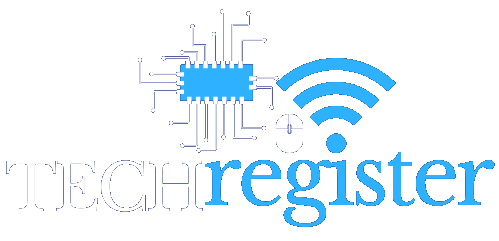In the sizeable global ERP market, SAP’s biggest threat is not some other software giant like Oracle. It is its own legacy software supported by other vendors.
So daunting is the prospect of switching providers for the largest customers, if SAP sticks to its plan to end legacy system support in 2030, it could lose a huge chunk of high-margin revenue to that competition unless it opts to delay the deadline again.
Gartner makes the case that despite SAP, the world’s largest ERP vendor, trying to convince customers to move off its legacy ECC system onto the current S/4HANA software – launched in February 2015 – around 24 per cent of SAP’s ERP user base will still be running the old software in 2030 when extended support ends. Mainstream support, which includes product updates as well as patches, ends in 2027.
Around 60 percent of SAP ERP customers are on ECC6 (ECC). By 2030, Gartner estimates that more than 40 percent of those customers will still use ECC for key business areas. That’s nearly a quarter of SAP’s ERP user base going out of support in five years.
SAP spent nearly a decade trying to get users to move to its latest ERP platform, saying it has a better UI, improved agility, real-time reporting, and advanced analytics, among other things. But it’s also a shift to a completely new platform and business processes, which is a daunting task for users who have spent years and millions of dollars implementing and embedding the system into their commercial operations.
Despite SAP’s efforts and some progress, a significant number of users remain unconvinced of the need to jump.
Calum McDonald, principal analyst in Gartner’s Sourcing, Procurement and Vendor Management organization, told The Register:
“A lot of customers are stable on ECC, and have been for years now. Many of them struggle to come to terms with the idea of making a multimillion-dollar – often larger when you take into account everything that comes into it rather than just the licensing – investment when the only time pressure they feel is from SAP and the cutting off of support. It is not necessarily an intentional decision. A lot of them feel like they’re being forced almost that way due to the pressure of the end of support, and they just can’t justify that extremely large investment for what they see, as of yet, as a limited return.”
Bill Ryan, Gartner vice president and leader in Sourcing, Procurement and Vendor Management, pointed out that if users want to take advantage of an in-memory database, they can migrate their instance of ECC applications to HANA, without having to go through the business process upheaval to get to S/4HANA.
“The lack of a business case has been an issue from day one, and it remains an issue,” he told us.
For both SAP and its customers, the implications of a large chunk of ECC users staying on the platform after 2030 will be serious. For users, it means weighing up the options. Before they get to the 2030 deadline, they must first decide whether to go for SAP’s offer of extended support after mainstream support ends in 2027. Although customers won’t get product updates, they will get the same SLAs, bug fixes, and patches as before 2027.
“It is similar to mainstream maintenance; it’s after 2030 where things really change,” said Ryan.
Staying with SAP means the prospect of customer-specific support. “It’s a premium paid, but there are no guarantees or SLAs that fix known bugs. It’s not really a place where most customers are going to want to end up,” said McDonald.
The alternative is third-party support from independent providers such as Rimini Street, Spinnaker Support, or Support Revolution. McDonald said a growing number of customers were beginning to explore the possibility of third-party support, not least because it was cheaper than the alternative.
“That’s purely due to SAP’s limitation of the end of support date, which is forcing them to evaluate all options ahead of them,” said McDonald. “There are some technical limitations to what can be done with third-party support as compared to SAP support. However, the costs involved and the cost of changing or upgrading to S/4HANA often make that case a lot stronger for customers who are exploring third-party support now.”
When a quarter of ERP customers are determined to stay with its legacy product after extended support ends, it creates a serious dilemma for the vendor, and customers should be aware.
Ryan points out that SAP’s support revenue is extremely profitable, especially since the vendor is not enhancing the ECC product. “Are they going to walk away from very high-margin revenue, or put it at risk for thousands of ECC customers in 2030? Can they?”
Gartner doesn’t have the answer, but it does think it is enough of a problem to lead “SAP to reconsider its maintenance end date and cloud migration strategy,” according to a recent research note.
SAP has remained steadfast in its determination to stick to its 2027 and 2030 deadlines. However, it has indicated that there may be some concession to the services allowing cloud migration beyond 2030 so long as users sign up to a “cloud subscription transition option.” SAP CEO Christian Klein told investors: “It’s not about the extension of on-premises maintenance.”
The problem is that many users are happy with perpetual licenses and are not all that keen on moving to subscription licenses. Whether users have moved from ECC to S/4HANA or not, subscription licenses can be akin to being asked to sell their house and rent it back from SAP.
“It is a step too far for most,” said McDonald. “For most customers, they don’t see it as a compelling reason to sacrifice all the investments that they made thus far.”
Ryan said: “It’s probably an uphill battle from a commercial perspective because SAP has pulled back discounts and that sort of thing, but it does remain a choice. SAP does continue to offer a contract conversion program from ECC to S/4HANA and so it shouldn’t just be this following the vendor to where they want you to go.”
He said that customers wanting to remain on perpetual licenses would need to “go through a process of convincing SAP that the only way they’re going to get some S/4HANA revenue” is by allowing them to continue with a perpetual license. If they can make the case, “SAP will grudgingly come to the table,” he said.
The leverage they can use to remain on perpetual licensing is the threat of staying on ECC and using third-party support. “It’s easier than changing vendor for the whole software. At the moment, ECC is the biggest competitor to S/4HANA at this time, and the third-party option allows it to be a competitor for longer than SAP has taken the commercial decision to limit,” McDonald said.
The message from SAP is clear. It won’t extend support beyond 2027 and 2030. But when it looks at the revenue numbers come 2030, it will have to see if the position still adds up.
SAP declined to comment. ®












